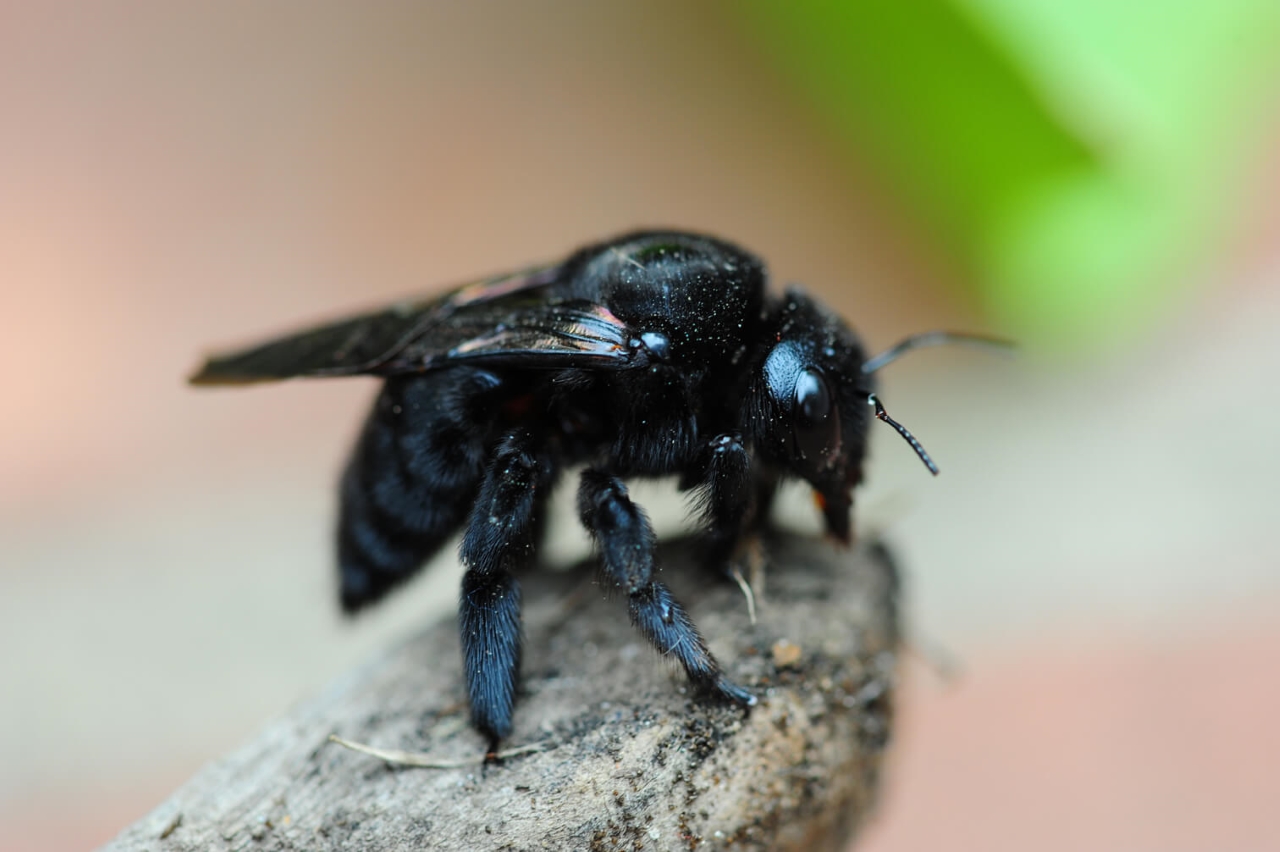Wood-Destroying Insects Besides Termites
Termites are not the only insects responsible for home and property damage. Homeowners should know about other common wood-destroying insects and learn to identify them, their characteristics, and habits. Contact a wood-destroying insect professional to take control of the problem before they cause cosmetic and structural damage to your property.
Carpenter Bees: One of the Most Common Wood-Destroying Insects
Carpenter bees don’t eat wood, but they can create holes in your deck, window and door frames, and siding. Carpenter bees look like bumble bees except they have smooth, shiny abdomens instead of yellow hairy ones.
They bore holes in wood to nest. The first signs you may see are smooth, round holes. Look for sawdust below the holes. Controlling carpenter bees can be difficult, but a professional knows how to locate their galleries and treat them appropriately.
Carpenter Ants
Like carpenter bees, carpenter ants don’t eat wood but tunnel into it to build their nests. These oversized ants are easy to spot and are red, brown, yellow, or black. They like moisture, so look for them in the kitchen, bathroom, or in any other damp area.
You can help prevent these wood-destroying insects by eliminating sources of moisture, but once you have an infestation, you’ll need a licensed professional exterminator to get rid of them.
Old House Borer: A Wood-Destroying Insect
A destructive wood-eating insect, the old house borer can infest both older and newer homes. Their life cycle is very long, earning them the name old house borer. They are most active in the months of June and July.
The larvae of these beetles feed on wood and can damage wooden furniture and structural supports around your property. After a WDO inspector has identified these beetles, contact an exterminator to get rid of them.
Powderpost Beetles
Powderpost beetles are one of the smallest common wood-destroying insects, making them harder to see. The adult is less than 5/16 of an inch long. They come into your home through infested lumber or firewood.
Adults can also fly into the home to lay their eggs in paneling or door frames. They prefer damp wood in poorly ventilated places like basements and crawl spaces. Look for them around water leaks and areas prone to moisture. Their larvae feed on hardwoods and softwoods. The adults bore exit holes about one-eighth of an inch in diameter.
Two of the most damaging types of powderpost beetles in the U.S. are furniture beetles and deathwatch beetles. Furniture beetles are a quarter of an inch long and reddish brown in color. Indoor humidity of over 60% provides the right conditions for an infestation.
The deathwatch beetle is also reddish brown. They lay their eggs in old exit holes. Each type of powderpost beetle is difficult to identify, so it is best to hire a WDO inspector if you suspect you may have an infestation.
Prime Home Inspections offers home inspections and other inspection services to the Greater Seattle area. Contact us to request an appointment.

